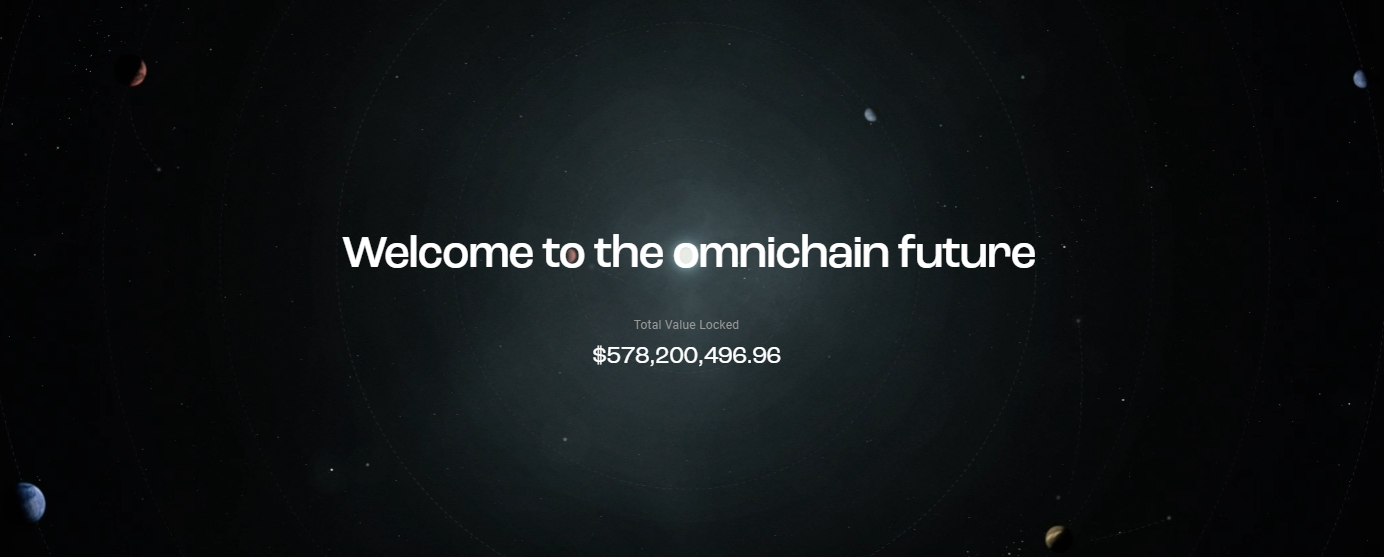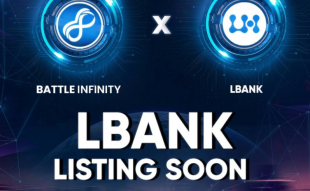Join Our Telegram channel to stay up to date on breaking news coverage
Stargate Finance is a community-driven company that is constructing the first completely composable native asset bridge as well as the first decentralized application (dApp) to be developed on LayerZero.
After Ethereum’s success, a number of other alternative chains and second-layer rollups appeared on the market in order to satisfy the growing need for chain roaming yield farmers.
Every ecosystem is betting its long-term success on a distinct combination of blockchain architectural trade-offs including decentralization, security, and scalability.
As the number of competing DeFi ecosystems increased, a consistent flow of users found ways to execute cross chains in an effort to increase their overall output.
The goal of Stargate is to make transferring liquidity across chains a quick and easy process that only has to be done once. Stargate enables instantaneous trades between any asset on any network and any asset on any other chain with just a single click.
Consider the scenario in where a user wants to trade DAI on Ethereum for AAVE on Polygon on a decentralized exchange (DEX) that is not based on Stargate.
Users are able to swap DAI on Ethereum for AAVE on Polygon in a single transaction from the source chain using SushiSwap, which is built on Stargate.
This can be done without ever having to leave the Sushi user interface. Users are able to offer more assets for future gas payments on the destination chain while simultaneously paying the gas fees for both the source chain and the destination chain in a single transaction.
More on Stargate Finance (STG)
Stargate is a community-driven organization that is constructing the first completely composable native asset bridge as well as the first decentralized application (dApp) to be developed on LayerZero. It is a system for the transmission of liquidity that is totally customizable and plays an essential role in Omnichain DeFi.
Users and decentralized applications (dApps) may utilize Stargate to move native assets between chains, and they can also use it to access the unified liquidity pools provided by the protocols with instant guaranteed finality.
Stargate owners are required to connect their wallets to the Ethereum Mainnet, visit a DEX, swap DAI for USDC because Polygon does not support DAI, find a first-generation bridge to swap USDC for a wrapped version (USDC-wrap), connect to Polygon on Metamask, bridge, and pay a fee, find an AMM on the BNB Chain with a pairwise pool of USDC-wrap to swap for AAVE, and pay a fee. After then, they must repeat the process in order to get back to Mainnet.
Stargate, which is built on LayerZero’s generic communications protocol, is intended to make cross-chain composability easy while maintaining a high level of security.
Bridges that are composable across several chains may be quickly integrated with any decentralized application (dApp) running on any chain. The customer is shielded from the process of bridging in order to save them the effort, danger, and anxiety associated with doing the task on their own.
Your capital is at Risk
How to Use Stargate?
Users of DeFi can conduct several transactions on Stargate for the purpose of exchanging native assets. Users have the ability to swap, for instance, USDC on Ethereum for USDT on BNB.
A holder’s chosen yield aggregator may be assembled into Stargate so that assets can be deployed across chains, which opens the door to further APY opportunities. These cross-chain swaps are supported by the Stargate unified liquidity pools, which are controlled by the community.
What Makes Stargate Unique?
The bridging trilemma was successfully solved for the first time by the Stargate Bridge. Existing bridges are forced to make concessions with regard to the following fundamental bridge characteristics:
- Users and apps may be assured that a transaction they successfully execute on the source chain will reach at its intended destination chain in real time thanks to instant guaranteed finality.
- Wrapped assets necessitate additional swaps and charges to get the necessary object, therefore users and programs prefer to swap in native assets instead.
- More liquidity is created for users and apps that rely on the bridge by providing them with access to a unified liquidity pool that serves several chains.
Following are the features that make Stargate unique:
Easy Transferability
Users are able to move native assets between chains at a 1:1 ratio by utilizing Stargate’s unified liquidity pools. It is guaranteed that a transfer that is made on the source chain will reach its intended destination.
Liquidity
The addition of liquidity to the Omnichain protocol of Stargate and the receipt of stablecoin rewards on each transfer of Stargate. In addition to this, liquidity providers have the ability to farm their LP tokens for STG token rewards.
Can be Easily Farmed
Stargate liquidity providers are able to farm their LP tokens so that they can receive STG prizes in exchange. To participate in the Stargate community, one must first get a STG by their own efforts.
Easy Stake
Owners of STG tokens have the ability to lock their STG tokens in exchange for veSTG, which is Stargate’s governance token. The more value individuals derive from using veSTG, the longer they are willing to stake their STG tokens.
Your capital is at Risk
What Is The Stargate Whitelist Partner Program All About?
Partners who utilize Stargate in production and have a significant transaction volume are eligible to apply to become members of the whitelist partner program offered by Stargate.
For every transaction that is carried out via the Stargate protocol, partners will be given 0.3 bps. These are going to be settled in stablecoin on a monthly basis. The base fee that the Treasury uses will have the 0.3 bps subtracted from it.
Prices for Readjusting the Stargate
Keeping in mind that Instant Guaranteed Finality (IGF) using native assets is one of the primary characteristics of Stargate, the performance of Stargate requires destination chains to keep sufficient reserve balances on hand to handle incoming swap transactions. This is because IGF is one of the primary characteristics of Stargate.
The balances start off at the ideal goal balance when the protocol begins, but successive swap transactions reduce certain balances on destination chains while increasing others on source chains.
Stargate includes rebalancing fees in its design, and these fees are calculated based on the current balance of any possible transaction as well as the size of the transaction.
The purpose of these fees is to encourage users to carry out swaps that “refill” native asset balances and to discourage users from engaging in transactions that could completely deplete the reserve balance.
The Possibility of Composition across All Chains
Stargate enables instantaneous trades between any asset on any network and any asset on any other chain with just a single click. On a DEX that is not based on Stargate, for instance, a user may seek to trade DAI on Ethereum for AAVE on Polygon in order to complete a transaction.
They are required to connect their wallet to the Ethereum Mainnet, go to a DEX, swap DAI for USDC because there is no DAI on Polygon, find a first-generation bridge to swap USDC for a wrapped version of USDC (USDC-wrap), connect to Polygon on Metamask, bridge, and pay a fee.
They are also required to find an AMM on BNB Chain with a pairwise pool of USDC-wrap to swap for AAVE and pay a fee after that, they must repeat the process in order to get back to Mainnet.
Demand-Based Cross-Chain Liquidity
With the debut of SushiSwap, Sushi has become the first decentralized exchange (DEX) to utilize Stargate to access a single pool of liquidity from any chain, at any given moment. Simplifying the lives of consumers and developers alike may be accomplished by abstracting away complexity.
Stargate gives developers access to enormous pools of capital-efficient liquidity without the burden of monitoring LP emissions. Additionally, it speeds up core development cycles while providing customers with access to local assets.
Through the automation of cross-chain inventory management and the provision of access to liquid inventory on demand, Stargate does away with the requirement for decentralized applications (dApps) fund or maintain emissions in order to incentivize LPs across multiple networks.
Decrypting Omnichain Using Web3
Stargate broadens the functionality of all decentralized applications (dApps) by providing a re-usable bridge that enhances the user experience without needing any modifications to the code that is already in place.
Although Stargate is used for swaps in Sushi, the implementation of Omnichain composability has significantly improved several other often used functions.
In addition, decentralized applications (dApps) are fighting with one another to be the first in their respective categories to provide their customers the added benefits of developing on Stargate with the help of an advanced algorithm.
In addition to providing other services, the first Omnichain AMMs, wallets, yield aggregators, and lending decentralized applications (dApps) will provide access to a single pool of liquidity that is scattered over several chains.
Binance Includes Stargate Finance
Decentralized finance (DeFi) is an industry that Stargate Finance, a blockchain project, is a part of. Stargate Finance is a very modest blockchain project. It promotes itself as the first and only bridge that addresses the three primary difficulties that are associated with constructing bridges.
These difficulties are connected to the concepts of instant assured finality, uniform liquidity, and native assets. It possesses capabilities that make it possible for users to wrap all currently available DeFi apps.
Additionally, users and decentralized applications (dApps) are able to move native assets seamlessly between chains while simultaneously accessing unified liquidity pools with instant assured finality. According to the official website for Stargate, the game has a total value locked (TVL) of more over $448 million.
The Stargate Finance platform uses its own token, which is denoted as STG. It is the governance token that contributes to the successful operation of the Decentralized Autonomous Organization (DAO). Stargate liquidity providers are able to get STG incentives in return for LP tokens that they offer to the network.
On Friday, following an announcement made by Binance that it will list STG, the coin’s price skyrocketed, reaching new all-time highs. This implies that the currency will be available to purchase for the millions of consumers that use Binance.
Historically speaking, the value of cryptocurrencies has a tendency to increase once they have been listed on major exchanges such as Coinbase and Robinhood. These gains, however, typically only last for a short period of time since investors begin to swiftly take profit.
After OmniBTC was linked with Layer Zero Labs and the platform, Stargate Finance saw a rise in value as well. Users will be able to effortlessly OmniSwap across EVM chains as a result of this.
Your capital is at Risk
Where Does Stargate Finance’s Price Go from Here
A quick look of the price chart for STG on TradingVeiw.com reveals that Stargate Finance’s price has recently been moving in a direction consistent with a declining trend. This week, it reached an all-time low of $0.33 as a result of its decrease. After the Binance listing took place on Friday, it skyrocketed to new heights.
As it went higher, it was able to break through a key point of resistance located at $0.5452, which was the day’s high point. This occurred on June 28. It also climbed above the moving averages of the previous 25 and 50 days.
As a result, and as was said previously, the pumps that take place after a listing are often just transitory. As a consequence of this, there is a considerable likelihood that the coin will decline, and it may possibly fall lower than the support level of $0.50.
Read More
Join Our Telegram channel to stay up to date on breaking news coverage


